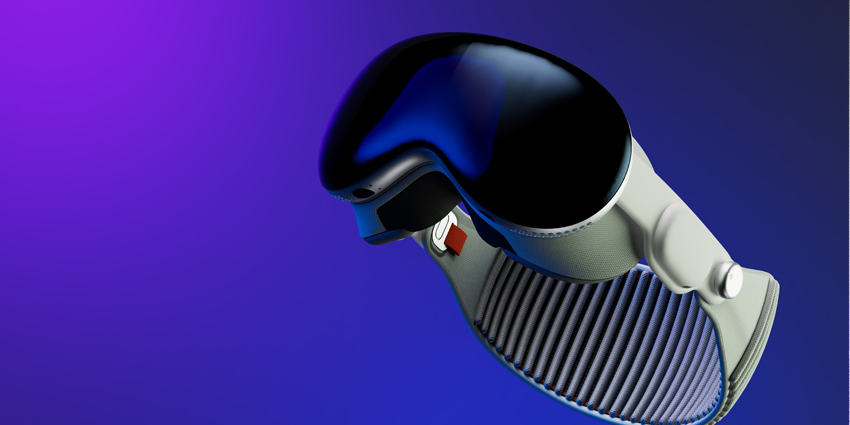True augmented reality glasses – the kind that projects holographic onto your surroundings, fetches data from the cloud, and intuitively reacts to your movements – have been a long time in the making.
But it is only now in 2021 that the market has gained momentum with major announcements in the segment from Facebook (now Meta), Apple, and several other companies.
Meta has launched a number of initiatives to turn the promise of true AR glasses into reality, and project Nazare is one of them.
Project Nazare can be defined as an AR glasses device that would allow the wearer to communicate with others on their network, view people as 3D avatars, and interact with them in real-time aided by 3D digital assets, tools, and props.
Importantly, Project Nazare is the code name for Meta’s upcoming AR glasses and its official consumer-facing name is yet to be decided.
Meta’s Vision Behind Project Nazare and the Associated Project Aria
Project Nazare was first announced by Meta CEO Mark Zuckerberg during his keynote speech at Connect 2021. Amid a slew of other announcements, Zuckerberg mentioned Project Nazare almost in passing and debuted a short, simulated concept explaining how the glasses might work.
“Today I want to show you an experience that we’ve been working on for Project Nazare, which is the code name for our first full augmented reality glasses,” he said before going on to narrate a potential use case for the Nazare AR glasses.
In the demo, there is a user wearing the AR glasses while chatting with friends on WhatsApp. The group is planning a game night, and can quickly select a game from the available catalogue directly within the conversation flow.
Once the game is selected, the user walks over to a dining space and the Nazare glasses project a holographic image of the game along with the 3D avatars of the user’s friends onto the dining table.
Essentially, Project Nazare would allow you to seamlessly shift from virtual conversations to lifelike social experiences without missing a beat.
Now, Nazare is among the three AR glasses projects that Zuckerberg announced at Connect 2021. Project Aria is another associated initiative, which also aims to build a pair of AR glasses but without a built-in AR display.
Aria will collect data from real-world surroundings so that every location, object, brand, landmark, and other real-world elements have digital data and metadata associated with them.
Nazare possibly relies on the research enabled by Aria to make AR experiences as authentic as possible.
Key Features of Project Nazare’s Prototype AR Glasses
While we don’t know much about the Project Nazare line-up of AR glasses yet, there are a few features that have emerged from Zuckerberg’s keynote speech and the simulated demo.
- Field of view – The glasses are expected to feature a wide field of view, to the tune of 200-220 degrees. The idea is to mimic human vision as accurately as possible and provide the wearer with enough flexibility to move around without a jar between the real world and the AR overlay.
- Form factor – Here’s where we have a little more detail about Project Nazare’s specifications. Zuckerberg mentioned that Meta’s new AR glasses could be approximately 5 mm or 3/16 of an inch in thickness. Given that a standard pair of prescription glasses is between 2 mm and 6 mm thick, Nazare is poised to be quite wearable. Zuckerberg hinted that it is this ambitious form factor that has held Nazare back from being ready for market launch so far.
- The display – As expected, Project Nazare AR glasses will have a sophisticated hologram display, powered by built-in projectors and batteries. This feature sets it apart from Project Aria, which only has a sensor array to collect data without any image projection or interaction with the world.
- An array of sensors – The finalised AR glasses will have a number of sensors, cameras, speakers, and radios embedded in its form factor to provide the user with an immersive experience. It will also help to collect real-world data to continuously improve the experience.
All of these features will be supported by intensive developer effort and Meta’s decades of research in mixed reality.
At Connect, the company also announced initiatives like the Presence Platform and updates to spark AR, which invite developers to richly populate the AR/VR world with digital assets.
When Will Project Nazare Launch for Consumer Use?
As of now, there’s no official blog on Project Nazare from Meta and no word on when it will launch. However, in its roundup of Connect 2021 announcements, Meta said that Project Nazare will be officially available in “a few years.”
It might be worth the wait as Nazare will bring true and full-featured augmented reality in a user-friendly form factor – something that’s either still mostly theoretical or enterprise-facing.
Considerations and Potential Challenges
The biggest challenge with Meta’s Project Nazare is the significantly long lead time. While research and development is underway, it will be a while before consumers have an official beta on their hands. Meanwhile, there are other market competitors making moves.
For example, Apple’s equally ambitious AR glasses project is expected to launch sometime in 2022 or 2023, which will superimpose the user’s surroundings with useful information and digital assets.
Another challenge is general market readiness. The AR glasses breakthrough has been in the offing for a while, ever since we saw the first prototype of Google Glass in 2013. AR glasses have faced privacy issues, form factor challenges, slow adoption, and high prices – but the promise lived on.
Project Nazare aims to consolidate the incredible work done in this field over the last two decades and finally achieve market viability through Meta’s formidable tech arsenal and market reach.
In the Meantime…
If you are interested in exploring Meta’s wearable capabilities, the company’s new range of Ray-Ban glasses are a good place to start. Ray-Ban Stories come with built-in cameras, social media features, and a digital assistant (not true AR), priced at a competitive $299.






